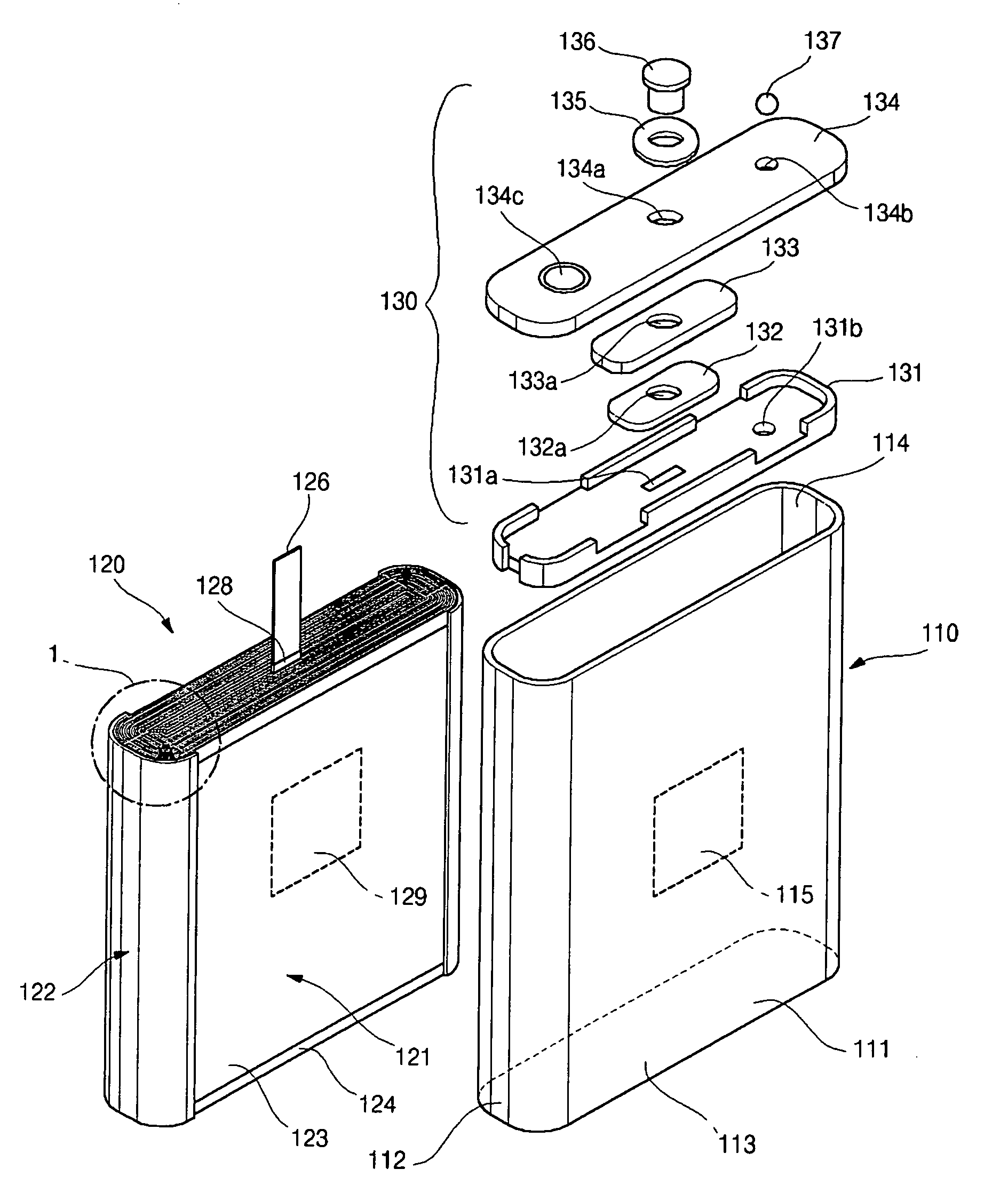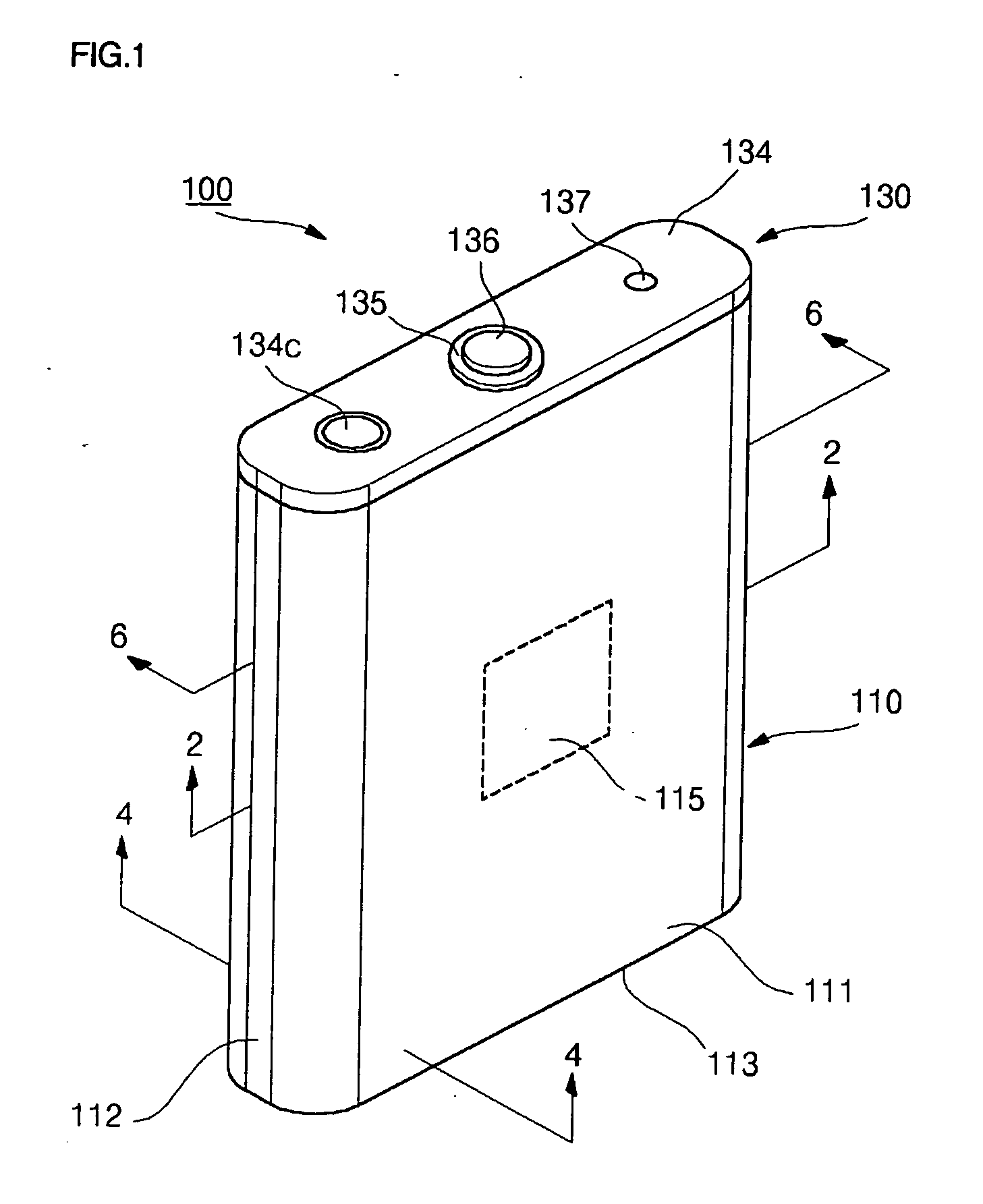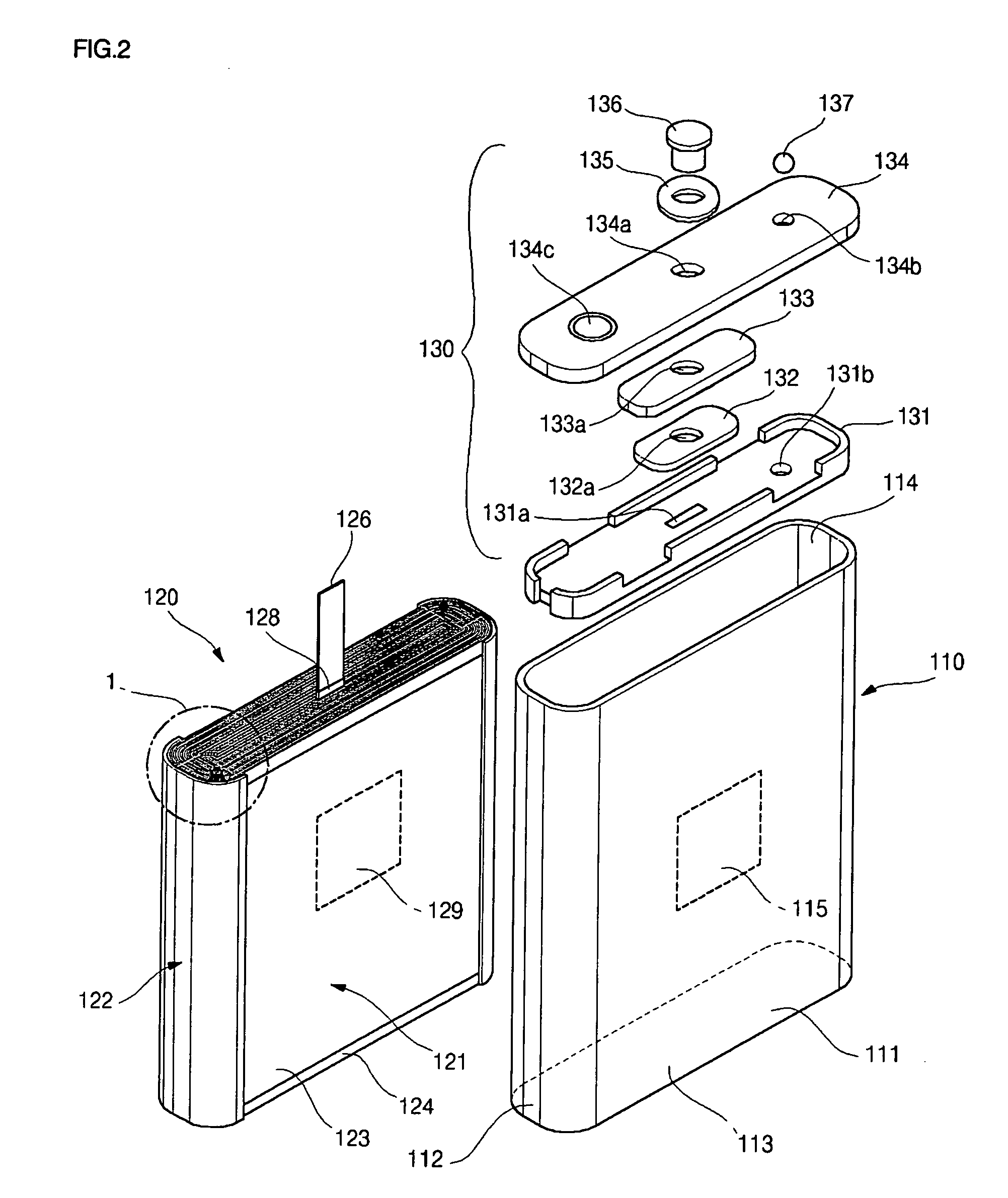Secondary battery
a secondary battery and battery technology, applied in the field of secondary batteries, can solve the problems of reducing the capacity of the secondary battery, reducing the number of times the electrode assembly can be wound, so as to increase the battery capacity and increase the winding
- Summary
- Abstract
- Description
- Claims
- Application Information
AI Technical Summary
Benefits of technology
Problems solved by technology
Method used
Image
Examples
Embodiment Construction
[0025] As shown in FIG. 1, a secondary battery 100 includes an approximately hexahedronal can 110 and a cap assembly 130 for covering the top of the can 110. The can 110 has an electrode assembly and an electrolyte contained therein, described in more detail below.
[0026] The can 110 includes a pair of long-sided portions 111 having a relatively larger area and spaced a predetermined distance from each other, a pair of short-sided portions 112 having a smaller area and integrally formed around both sides of the long-sided portions 111, and a bottom portion 113 integrally formed around each remaining side of the long and short-sided portions 111, 112.
[0027] The short-sided portions 112 may have a predetermined curvature so that they have a shape similar to the winding shape of the electrode assembly 120 (described later) and so that little space remains inside the can 110. The short-sided portions 112 may also be generally perpendicular to the long-sided portions 111. However, the s...
PUM
| Property | Measurement | Unit |
|---|---|---|
| Electrical conductor | aaaaa | aaaaa |
| Area | aaaaa | aaaaa |
| Distance | aaaaa | aaaaa |
Abstract
Description
Claims
Application Information
 Login to View More
Login to View More - R&D
- Intellectual Property
- Life Sciences
- Materials
- Tech Scout
- Unparalleled Data Quality
- Higher Quality Content
- 60% Fewer Hallucinations
Browse by: Latest US Patents, China's latest patents, Technical Efficacy Thesaurus, Application Domain, Technology Topic, Popular Technical Reports.
© 2025 PatSnap. All rights reserved.Legal|Privacy policy|Modern Slavery Act Transparency Statement|Sitemap|About US| Contact US: help@patsnap.com



